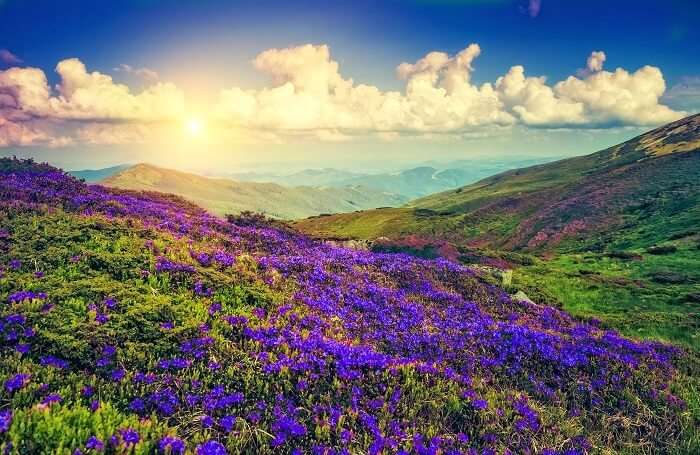Why is Neelakurinji blooming only once in 12 years?
Neelakurinji is a shrub used to grow abundantly in the Western Ghats South India's shola grasslands. The Nilgiri Hills, turning blue once in twelve years when all together the Neelakurinji bloom, scattering the landscape with its hue. The hills literally mean the Blue Mountains that got their name from Neelakurinji flowers purplish-blue. The Western Ghats is renowned for its rich flora and fauna, and it also saves the mystery of Neelakurinji that flourishes as a tradition. Kurinji and other species of plants harmonize their flowering at a common site within large local populations. Plants can be categorized as plants which are annuals and perennials. Yearly plants complete their service life in one year. They grow out of the seed, blossom, yield seeds, and die the one growing season. Perennials plants are alive for over two years, flowering and setting seeds every year. Many kinds of perennials only bloom once in their lives, set seeds, and die. And from these seeds is created the future generation of plants, and then repeat this process. So these kinds of plants are also called monocarpic plants which flower only after maturity has been achieved. The amount of time taken to mature by different monocarpic species can differ. Since bamboo and Neelakurinji plants are certain monocarpic plants, the periods of maturity differ. Bamboo typically takes 40 years to grow, mature, and flower while Kurinji has different species with differing flowering intervals. So the plant in Neelakurinji matures in 12 years, and flowers once in 12 years.

Interesting facts about Neelakurunji
All tourists come from the nook and corner of the world to see the beauty of these mysterious flowers that add to the hilly land, Munnar, extra picturesque beauty. In any other area of the world, you can not find Neelakurinji flowers, this makes it the rarest of the rare. The last blooming in Neelakurinji was in 2006. After the long 12-year gaps now it's time for Neelakurinji to bloom in Munnar, this mysterious blooming flower makes Munnar have the world's top wish list locations. The kurinji blooming season starts in July and will last until the end of October. Neelakurinji flower can be described as a sign of love-longing, happiness for the poets, and also a sign of a female's self-awakening. The wealthy Neelakurinji is spread over 3,000 hectares of exciting hills that are shrouded in purple or blue colors. Every kurinji plant reproduces once in its lifetime, and it dies after blooming. There are different aspects that make this flower special since it only blooms in Munnar. The booming blue flowers shoot the place with excitement and the picturesque view of the blue-decorated valley also gives tourists an unforgettable experience.
The honey collected during the flowering season of Neelakurinji has a tastier and healthier origin of the Kurinji flower, so it is sold as Neelakurinji honey. The color shade of the flower can be tracked throughout the season starting from the lighter shades of blue and becoming purplish at season end.
Blooming flowers start from the bottom layer and hit the tops at the end of the season, allowing spectacular views of the hilly land. Kurinji's mast blooming is thought to be a survival mechanism for this insect. Specific Neelakurinji species vary in their ripeness and flowering intervals.
Since these rare Neelakurinji flowers only bloom once in every twelve years, a large number of tourists are pulled to Munnar. Neelakurnji's next flowering season will be in 2030 which is really a long wait. So if you're looking to experience the Neelakurinji's magnificent beauty, build your way to this thrilling hilly Munnar land this year with Lumiere Holidays' Neelakurinji tour package. Not only is the Neelakurinji on the hill worth watching a spectacle, but the hill country itself has a breathtaking beauty that can not be missed. Now, most of the Kerala tour packages include these beautiful places so you just find and book the best Kerala holiday packages and enjoy the beauty ever.
Comments
Post a Comment